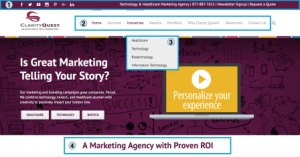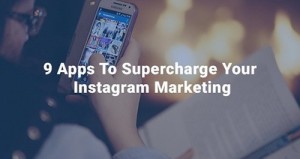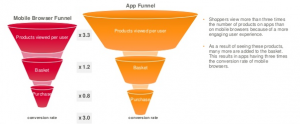With advances in location and time data, advertisers now have the ability to track consumer movement in the real world to measure outdoor advertising tactics.
Digital outdoor advertising has increased 35 percent since 2010 according to PricewaterhouseCoopers, and is projected to overtake traditional outdoor ad spending by 2020. Perhaps even more surprising is that outdoor advertising was the only traditional media category to show growth last year, hitting an estimated $33.5 billion in revenue according to a global NAR forecast.
Netflix recently spent $150 million on 32 Regency Outdoor billboards on Los Angeles’ Sunset Strip, a stunt to curtail the threat from major streaming competitors when it comes to grabbing the attention of offline audiences. With such a huge stake in Digital Out-of-Home advertising, Netflix is ensuring it will have its ads front and center when and where it wants them.
But Netflix isn’t the only company capitalizing on the value of DOOH. Apple, Google and Amazon are among some of the biggest outdoor spenders, putting tech companies at the forefront of the DOOH trend. So: What makes this advertising format appealing for tech-savvy marketers, causing them to allocate their budgets to OOH? And why should you be integrating it into your marketing mix this year?
Offline reach
While multi-channel campaigns that utilize new mediums and creative formats are now the norm, marketers are starting to face a conundrum with utilizing the sheer number of screens at a person’s disposal. According to a Deloitte survey, distracted viewers make up a significant part of today’s TV audience, with 89 percent of smartphone users saying they watch TV while using a phone. With digital devices abound, how do marketers know if their ads are actually seen?
This is where OOH has an edge. Whether you’re trapped between fellow commuters on the 405 or walking through Times Square, it’s hard to miss these impactful, creative displays. This simple fact shouldn’t be overlooked.
And with DOOH, the possibilities for targeted engagement are even greater. For example, take a recent campaign from Exterion Media and Transport for London. Google, Netflix, O2, Disney and easyJet were recently announced as launch partners for the company’s new digital ribbon 42-inch screens. With the potential to reach 15 million commuters each month, the tube’s new partners capitalize on reaching people on the go. These high-impact, HD screens are four-times more engaging than traditional OOH ads.
Location leverage
Now that you have your consumer’s attention, how do you know if the ad worked?
One of the most significant developments in DOOH advertising is the ability to leverage geo-location data for attribution, targeting and measurement. Mobile location data delivers consumer insights used to update digital billboard creative in real time, based on where people come from or where they’re headed. Additionally, contextual billboards can be tailored to time of day, local weather and even traffic conditions.
This approach enables DOOH to be included in cross-channel strategies. A potential customer exposed to a DOOH ad can be retargeted on their mobile device with a follow-up ad or call-to-action. According to research by Outdoor Advertising Association of America, mobile click-through rates increase 15 percent when supported by OOH ads, and according to ad consultancy WARC, 46 percent of U.S. consumers used a search engine after seeing an OOH ad.
Measurement possibilities
Most marketers understand that OOH works, but measuring its effectiveness has historically been a challenge. Until recently, buyers manually converted OOH inventory metrics to more standardized impressions, a time-consuming process that was often inaccurate.
Measurement is one of the main advances digital brought to the OOH advertising medium, and with location and time data, advertisers now have the ability to track consumer movement in the real world, such as in-store foot traffic. Since in-store visitation is a critical KPI for most retailers, DOOH can have a clear impact if integrated strategically into a marketing plan. The next step is to combine transactional data sets at the household level with location data – this will enable marketers to understand not only what households are exposed to what ads, but whether ad exposure leads to sales.
As more companies see the value in DOOH campaigns – both well-established tech giants and startups looking to attract new customers – the medium’s cross-channel and retargeting capabilities will expand and open even more opportunities for brands to connect with consumers in creative, engaging and non-intrusive ways. DOOH tactics that utilize not just digital billboards on roads, but lobbies and elevators, transit stations and in-store shelf space will transform how brands connect with consumers.
Opinions expressed in this article are those of the guest author and not necessarily Marketing Land. Staff authors are listed here.
Marketing Land – Internet Marketing News, Strategies & Tips
(62)
Report Post








